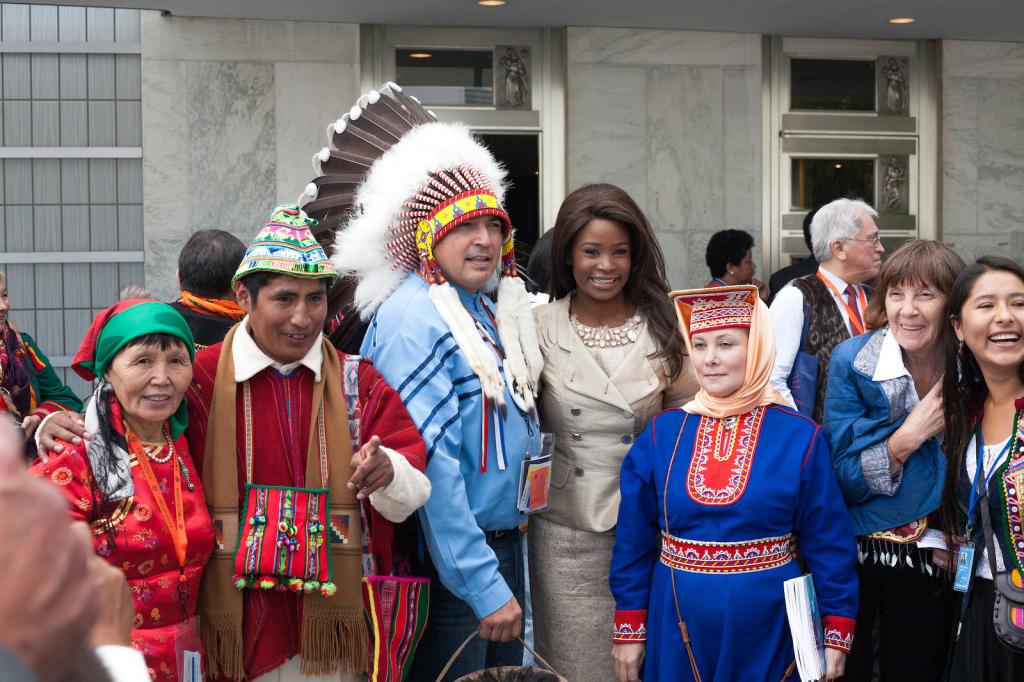 For every bit of energy a PG&E ratepayer uses — turning on a vacuum cleaner, powering up a computer, or heating up an oven — a little part of a tree or forest is saved to erase the carbon sins of the customer. The voluntary program costs ratepayers an average of $60 a year.
For every bit of energy a PG&E ratepayer uses — turning on a vacuum cleaner, powering up a computer, or heating up an oven — a little part of a tree or forest is saved to erase the carbon sins of the customer. The voluntary program costs ratepayers an average of $60 a year.
But the company isn’t telling its customers one crucial fact: Those forests were purchased years ago by a Virginia-based conservation group that used nearly $50 million in loans and grants from California taxpayers. That group, The Conservation Fund, then sold PG&E carbon credits on the land it had already purchased for preservation and selective logging.
Thousands of PG&E customers are effectively paying twice for the same Mendocino County forests.
The ClimateSmart program highlights the complex and murky relationship among big business, state environmental regulators, and various conservation groups working on climate change — a relatively new and untested system in which a vast amount of money is traded without much public scrutiny.
ClimateSmart, which has operated since May 2007, has more than 30,000 enrolled residential and business customers, including the American Lung Association and the beloved Bay Area coffee maker Peet’s Coffee & Tea. Participants pay a surcharge based on their power usage. The utility said it has collected about $8.6 million so far.
“We invest in these projects on behalf of our customers,” said Kathleen Romans, a spokeswoman for PG&E. “We’re procuring something for them. Their funds come to us, and we’re investing, under contract, projects that provide co-benefits — healthier habitat for wildlife, watersheds, and native plants.”
The PG&E marketing campaign for ClimateSmart includes promotional inserts in power bills, direct mailings, newspaper and radio ads, and a website. The company is authorized by state regulators to spend $16.3 million marketing and running the program.
To some environmentalists, the program is designed to do little else besides assuage the guilt of carbon polluters.
“Indulgences didn’t work in the Middle Ages, and they don’t work now,” said Rolf Skar, a campaigner with Greenpeace USA.
PG&E’s investments in carbon sequestration include a company called California Bioenergy, which captures greenhouse gases emanating from cow manure, and a program that collects and gets rid of potent, ozone-destroying gases from appliances.
The company also targets timber–saving programs, two of which were funded by California taxpayers. PG&E’s ClimateSmart website makes no mention of the public financing of these projects. And none of the company’s ClimateSmart press releases mention it.
But the forest land that ClimateSmart is saving to sequester carbon has long been targeted, and protected, by environmental programs.
In 2004, The Conservation Fund bought, with substantial help from state taxpayers, nearly 24,000 acres of forestland in Mendocino County. The property, called the Garcia River Forest, is in California’s Coast Range, nearly 10 miles northeast of Point Arena. Redwoods fill the landscape like bristles on a brush — straight, true, and anywhere and everywhere the steep, shadowy surface allows.
Not far away, The Conservation Fund in 2006 acquired two more properties: 16,000 acres of the Big River and Salmon Creek forests, which are recognized by state officials and The Conservation Fund as one conservation project.
The total purchase price for both projects was $66.5 million.
The state provided nearly $50 million through taxpayer-funded bond money and a $25 million loan. The Conservation Fund and The Nature Conservancy, another national conservation organization, provided an additional $10.5 million. Private donors, including the charitable arms of major housing developers, such as Centex and the ACE Group, donated the rest.
 The land is not just sitting idle soaking up carbon. In 2004, The Conservation Fund convinced the state that the forest should become a pilot project that not only would restore and conserve the forests, but also could make a little money.
The land is not just sitting idle soaking up carbon. In 2004, The Conservation Fund convinced the state that the forest should become a pilot project that not only would restore and conserve the forests, but also could make a little money.
Based in Arlington, Va., The Conservation Fund focuses its efforts and money on land-preservation projects with “environmental and economic value,” including the protection of “working” forests, according to its website. In 2009, the nonprofit reported about $186 million in revenue.
Under the California projects, The Conservation Fund is allowed to log and harvest the redwoods on the property in an environmentally friendly way and sell the timber commercially. The group also promised to put permanent legal restrictions on the land that would keep it out of the hands of housing developers and agriculture forever.
“We wanted to be a model for revenue-producing conservation projects,” said Chris Kelly, The Conservation Fund’s California program director.
Selling carbon offsets
In 2005, The Conservation Fund saw another opportunity for making money on the timber tracts: carbon offsets, also known as carbon credits. California and other governments were becoming increasingly interested in the idea of a market for carbon, a cap-and-trade system that could be used to offset greenhouse-gas emissions.
The Conservation Fund put its carbon stores up for sale. Since 2008, PG&E has bought almost 935,000 metric tons of carbon for its ClimateSmart program, with each metric ton equal to one credit.
According to Kelly, the Mendocino County forests are capable of generating more than 1.4 million credits. Although Kelly would not name other buyers of The Conservation Fund’s timber credits, he said they included utilities, investment firms, and traders.
The California Public Utilities Commission allowed PG&E to buy carbon offsets for an average of $9.71 per metric ton, which would indicate it bought the credits for about $9 million. But Romans, the PG&E spokeswoman, would not reveal the specific price the utility paid.
Company press releases tout the program as a “first of its kind” and a means for PG&E to work with its ratepayers to “make a real difference in preserving the health and natural beauty of the planet for ourselves and future generations.”
Others aren’t so sure.
In the Garcia River Forest, trees are either logged or used for carbon credits sold to PG&E customers and others.
“We’ve said repeatedly that the ClimateSmart program is a huge waste of money from the customer’s standpoint,” said Mindy Spatt, a spokeswoman for The Utility Reform Network, a PG&E watchdog.
The fact that the property was bought using money from the state provides more evidence toward that position,
she said.
And although some say the credits may be “fake” because the forests already had been protected, Kelly contends they were critical for the forests’ survival. Without the money, he said, they would have been forced to cut down more trees.
If The Conservation Fund had “not received the offset revenues, we would have been compelled to actually increase harvest levels (within the limits permitted by our conservation easements) to pay our loans, cover management, and cover other expenses,” Kelly said.
PG&E’s Romans echoed this claim. She said the money the utility paid to The Conservation Fund was essential for keeping the trees safe from overharvesting.
“The ClimateSmart program allows The Conservation Fund to reduce selective harvesting in order to pay for the activities to bring the forest back to a healthy state,” she said.
But The Conservation Fund didn’t need PG&E’s money for that.
When it requested nearly $50 million from the state to buy the land, in 2004 and 2006, The Conservation Fund had already promised to provide public access, protect the watersheds and rivers, and “restrict harvest” volumes of the trees, according to documents from the California Coastal Conservancy and Wildlife Conservation Board.
Kevin Bundy, a senior attorney with the Center for Biological Diversity, said the state’s justification for granting the bond money includes “the express purpose of protecting and restoring” the forests.
But The Conservation Fund argues it has a right to sell carbon credits from those very same forests.
Their argument centers on a forest management protocol that allows The Conservation Fund to clear-cut the property to its absolute legal limit, Bundy said. This protocol — written after the sale and approved by the Climate Action Reserve — appears to contradict the state’s reasons for granting the bond money.
The Conservation Fund is arguing that it could harvest far more trees, but is choosing to preserve them instead. These preserved trees are therefore worth something that they can sell — carbon credits for PG&E and others.
But Bundy said a conservation group threatening to harvest a forest that it has acquired for preservation “appears more than a little suspicious.”
“It’s unlikely the developer (The Conservation Fund) would have taken a bunch of public money to acquire, restore, and protect a forest, then turn right around and clear-cut it,” he said.
The state, for its part, doesn’t seem concerned about the situation.
Logging trucks head down a dirt road in the Garcia River Forest, part of the “working” conservation area managed by The Conservation Fund.
Dave Means, assistant executive director of the Wildlife Conservation Board, said his agency provided the money at a time when carbon credits weren’t on anybody’s radar.
And Dick Wayman, spokesman for the State Coastal Conservancy, said “this type of revenue generation (is) entirely consistent with the purposes of the acquisitions and the related authorizations for state funding.”
Neither Means nor Wayman would respond directly to questions about ratepayer and taxpayer fairness.
Kelly, of The Conservation Fund, said his organization has promised to repay the $25 million loan from the state and two $2.5 million loans from The David and Lucile Packard Foundation using money generated from logging and carbon sales. The Packard Foundation will not accept revenue generated from logging.
He says any surplus revenue received — money that isn’t being used to manage the land, repair roads, restore bridges, pay property taxes or employment costs, or repay loans — will be split with donors, including the state.
But whether that surplus will ever be achieved remains unclear. So far, it hasn’t happened.
Kelly said The Conservation Fund is likely to sell some of the properties in the next three to five years. He said buyers might include investment firms or timber companies.
But because any new owners would be encumbered by the property restrictions and would have to manage the trees for the carbon credits sold by The Conservation Fund, it remains to be seen whether Kelly’s organization can sell the property for the price at which it was purchased.
Timber carbon credits are bought with the understanding that those credits will be managed for 100 years.
Kelly, however, insists The Conservation Fund’s investments in roads and bridges on the properties, as well as in the forests’ management, will make the property more appealing.
This summer, the Wildlife Conservation Board is set to decide whether to give nearly $40 million to The Conservation Fund to buy easements on two more timber properties in Mendocino County.
Those properties, the Usal and Gualala forests, are being considered by the California Climate Action Registry, an independent, Los Angeles-based offset registry whose protocols have been adopted by the state.
According to Kelly and Means, from the Wildlife Conservation Board, this time there are no promises to share any carbon-sale spoils.
But for Bundy, the ClimateSmart projects, and the state’s role supporting these carbon offset projects, may lead to a system that doesn’t protect the climate.
“I have no objection to public money being used to acquire and restore cut-over land,” he said. “I start to get concerned, however, when projects like this start racking up (and selling) carbon credits for actions that likely would have happened anyway.”
“If the reductions associated with these projects aren’t real or ‘additional’ — that is, they would have happened anyway, with or without the carbon market — then the credits generated by these projects do not actually offset any emissions,” he said.
Greenhouse-gas emitters will buy them regardless, he said, and the amount of real carbon pumped into the atmosphere will continue to increase.
This story was produced by California Watch for the Climate Desk Collaboration.



